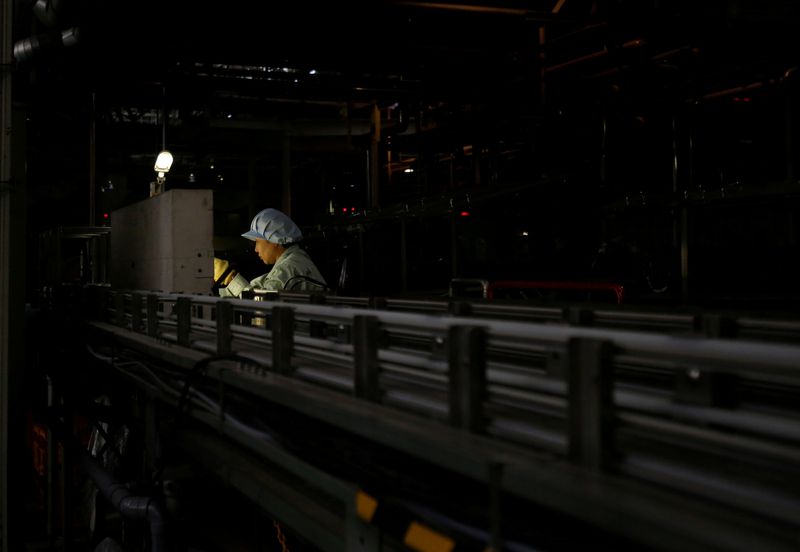TOKYO (Reuters) - Japan's factory activity contracted in June after expanding for the first time in 7 months in May, a private survey showed on Monday, dragged down by weak orders for cyclical goods amid a global economic slowdown.
The final au Jibun Bank Japan manufacturing purchasing managers' index was at 49.8, returning below the 50.0 threshold that separates growth from shrinkage, after May's 50.6 reading.
Output and new orders, the subindexes that constitute the majority of the headline index, fell back to contraction, ending a brief rebound buoyed by improved business confidence.
"Weak demand for goods, especially semiconductors, alongside labour suitability issues weighed on sales and output volumes," said Usamah Bhatti at S&P Global (NYSE:SPGI) Market Intelligence, which compiled the survey.
New orders from overseas customers decreased at the fastest rate in four months, notably reflecting feeble demand from China, Japan's biggest trade partner.
The soft PMI reading came after Friday's government data showed Japanese manufacturing output falling more than expected in May, dented by automakers' parts shortage and production cuts.
Thanks to flourishing service-sector activities and the ultra-loose monetary policy, Japan has managed to temper the impact of worsening global economic conditions, but slowing U.S., Chinese and European economies are hurting its export-reliant manufacturing sector.
Meanwhile, suppliers' delivery delays improved for a second month thanks to eased supply chain pressures, with the average lead times hitting the shortest since March 2016. The rise in input and output prices were the slowest in 28 months and 21 months, respectively.

Some firms still noted rising labour costs as the cause of high input costs, the survey showed, after major companies lifted pay at the fasted pace in three decades to counter consumer inflation and respond to political calls.
Looking a year ahead, manufacturers' future output expectations were the strongest since October 2021, as they hope for a recovery in demand and an easing of disruptions seen in the semiconductor market.